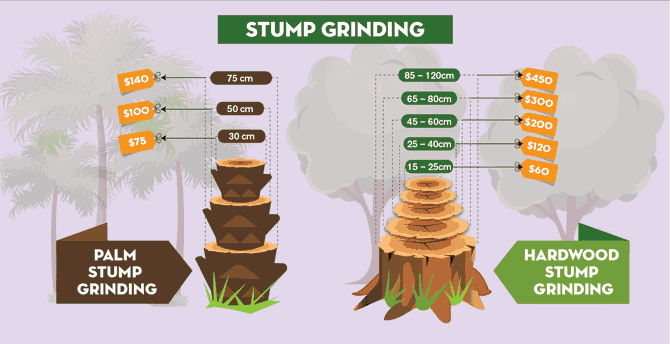The Environment-Friendly Conveniences Of Stump Grinding: A Liable Method To Land Management
The Environment-Friendly Conveniences Of Stump Grinding: A Liable Method To Land Management
Blog Article
Staff Writer-
When it comes to land management, have you thought about the resilient benefits of stump grinding? By resolving the residues left behind after tree elimination, this practice not only aids in soil wellness renovation but also plays an important duty in protecting against disintegration and sustaining biodiversity. The environmental advantages of stump grinding extend far beyond mere appearances, using a lasting remedy that harmonizes with nature's elaborate systems.
Soil Health Renovation
Aiming to boost the high quality of your soil? Stump grinding can be a game-changer for boosting dirt health on your home. By getting rid of old tree stumps, you're producing area for new development and permitting important nutrients to go back to the soil.
As the stumps break down gradually, they release organic matter, improving the soil and promoting better plant development.
Furthermore, stump grinding helps to aerate the dirt, enabling much better water seepage and root advancement. Compacted dirt can prevent plant growth and water absorption, however by grinding stumps, you're loosening up the dirt and developing a healthier environment for your plants.
Moreover, stump grinding can additionally aid to prevent parasite problems and diseases that old stumps may draw in. By eliminating these possible risks, you're developing a more secure and more effective landscape.
Disintegration Prevention
To stop soil disintegration successfully, stump grinding plays an important function in keeping the stability and honesty of your land. By eliminating undesirable stumps from your property, you're additionally minimizing the threat of erosion brought on by water overflow. inter tenancy grinding gets rid of barriers that can disrupt the all-natural flow of water across your land, protecting against soil erosion at the same time.
When stumps are left untouched, they can function as barriers to water flow, triggering soil to wash away throughout heavy rainfalls. This disintegration not just harms your land but additionally adds to sedimentation in nearby water bodies, harming water communities.
Stump grinding helps to stop these issues by leveling the ground and promoting proper drainage, decreasing the probability of disintegration.
Biodiversity Assistance
Preserving healthy biodiversity on your land is crucial for producing a thriving ecological community. By utilizing stump grinding as a lasting land management method, you can considerably support biodiversity.
Stump grinding helps promote biodiversity by producing new environments for different plant and animal species. The elimination of stumps permits the regrowth of indigenous plants, which in turn attracts a varied range of wild animals. Insects, birds, and tiny creatures grow in these newly easily accessible areas, contributing to the general biodiversity of your land.
Additionally, stump grinding helps stop the spread of conditions and parasites that can damage plant varieties, hence safeguarding the environmental balance on your residential property. By eliminating old stumps, you create room for new plant development, which boosts the total health and wellness of the environment.
This much healthier atmosphere sustains a broader variety of types, advertising biodiversity and creating an extra resistant environment in the long term. Embracing stump grinding as part of your land management strategy can have lasting favorable results on the biodiversity of your land.
Conclusion
By using stump grinding as a sustainable method to land management, you can improve dirt health, protect against disintegration, and assistance biodiversity. This eco-friendly approach not only benefits the ecosystem however additionally promotes the development of vegetation and develops habitats for numerous plant and pet varieties. Make a favorable influence on the setting by including stump grinding into your land management practices.
